Office furniture manufacturers have become increasingly conscious of the environmental impact of the products they create. They are turning to raw materials that are readily available and naturally renewable, utilising recycled materials, and even coming up with innovative new materials for their sustainable office furniture designs.
In this blog post, we look at some of the most sustainable materials office furniture manufacturers use today to create high-quality products that are built to last.
1. Wood
Wood has always been a popular material for office furniture, often used for workstations and chair bases. If sustainably sourced, wood is one of the most environmentally friendly materials available as it is infinitely renewable and acts as a carbon store, giving it an important role in reducing carbon emissions.
FSC (Forest Stewardship Council) and PEFC (Programme for the Endorsement of Forest Certification) labels exist to give customers confidence that the wood used originates from sustainably managed forests that are carefully handled and replenished to prevent damage to ecosystems.
Types of wood that may be used include:
- Pine - It grows fast, is widely available, and regenerates and stores carbon quickly.
- Oak - As oak trees are brilliant absorbers of carbon dioxide, responsibly sourced oak is deemed carbon neutral.
- Beech - The volume of beech harvested is lower than new growth, which makes it more sustainable than woods with a decreasing population.
Reclaimed wood sourced from old buildings, barns, and other structures is another way wood is repurposed into stylish, high-quality office furniture. This sustainable material reduces the demand for virgin timber and gives new life to materials that would otherwise end up in landfills.
In office environments, reclaimed wood adds a warm, rustic aesthetic, promoting a connection to nature that can enhance employee well-being and reduce stress. Its durability also ensures longevity, making it a cost-effective and eco-friendly choice for businesses committed to sustainability.
At the other end of the scale, 'fake' woods, such as particleboard, MDF and plywood, can emit harmful gases due to the adhesives used in manufacturing.
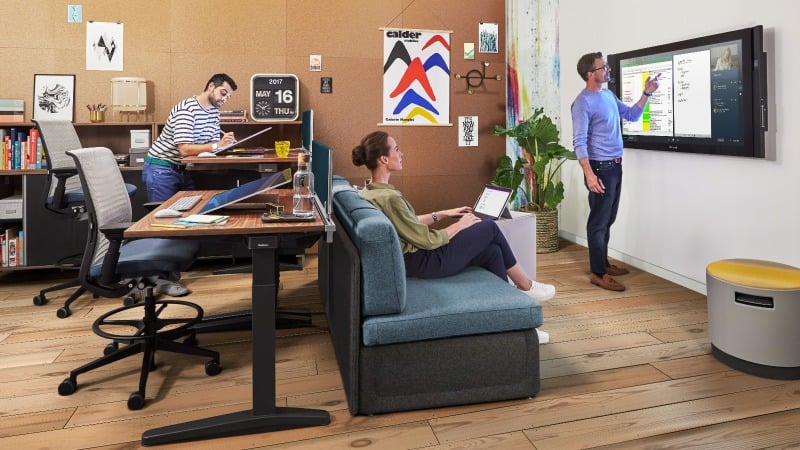
2. Bamboo
Technically speaking, bamboo is a tree-like grass rather than wood. And it can grow much faster than wood, making it one of the best sustainable resources for office furniture. Some species of bamboo can grow up to 36 inches every day. This means it can reach its full size between one to five years compared to most other trees that can take a decade or more to grow.
Bamboo also plays an important role in reducing carbon footprint as it absorbs carbon from the environment and releases high oxygen levels into the atmosphere.
Aside from its sustainability credentials, bamboo is a great choice for office furniture. It's lightweight, making it easy to move around as required, and is extremely durable. Plus, it looks fantastic and can boost the overall aesthetic of your office space.
Frovi's modular shelving range is created with pressed bamboo and recycled ocean plastic and felt.
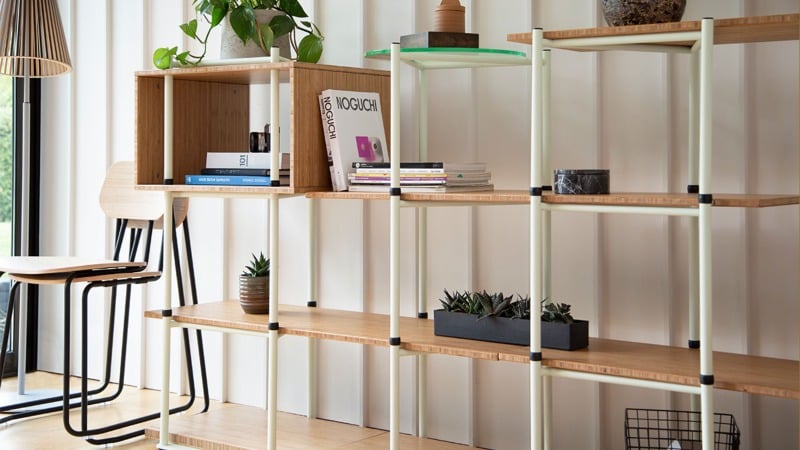
3. Natural fabrics
Natural fabrics like wool, hemp and linen are not only sustainable but also have organic, textural interest, which provides a calming aesthetic for the office. It's even possible to repurpose existing chairs by reupholstering them in these fabrics, rather than buying new.
- Wool has been used as a sustainable option for a long time. As well as being a renewable material, it is also naturally flame retardant and heat-regulating.
- Hemp is another great choice as the plant is extremely versatile and relatively undemanding to cultivate. Like wool, it also has natural heat-regulating properties. As manufacturing from 100% hemp can be costly, it is often blended with other materials to create sustainable textiles and covers. A lot of the final fabric also consists of cotton or silk, which also makes it softer.
- Linen is another natural fabric that's becoming increasingly used in furniture. It's strong, versatile and fully biodegradable.
4. Steel
Steel is classed as a sustainable material for a number of reasons. It's strong, meaning you don't need a lot of it. It can be reused infinite times, making it endlessly recyclable. It takes very little energy to produce, and it's also not toxic to people or the environment.
For all these reasons, it's a popular choice for chair bases. Many of Viccarbe's office chairs, including the Aleta chairs, have the option of a steel base.
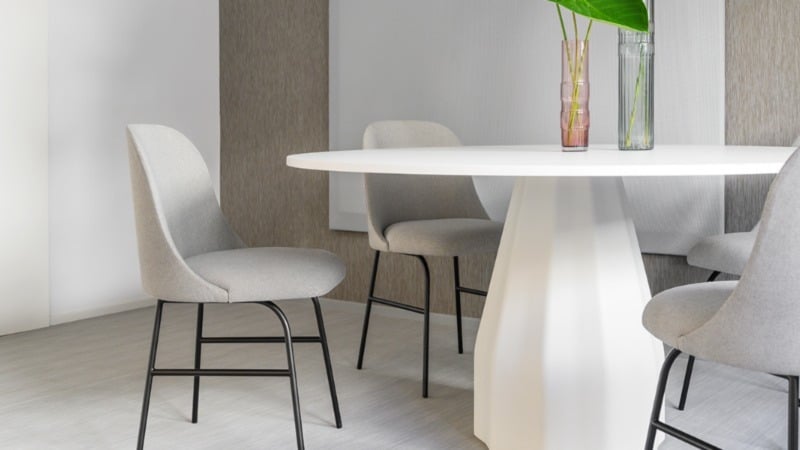
5. Aluminium
Like steel, aluminium can be infinitely recycled. Recycling aluminium also saves 95% of the energy used in its production from raw materials.
The Orangebox Eva chair is made from an aluminium base.
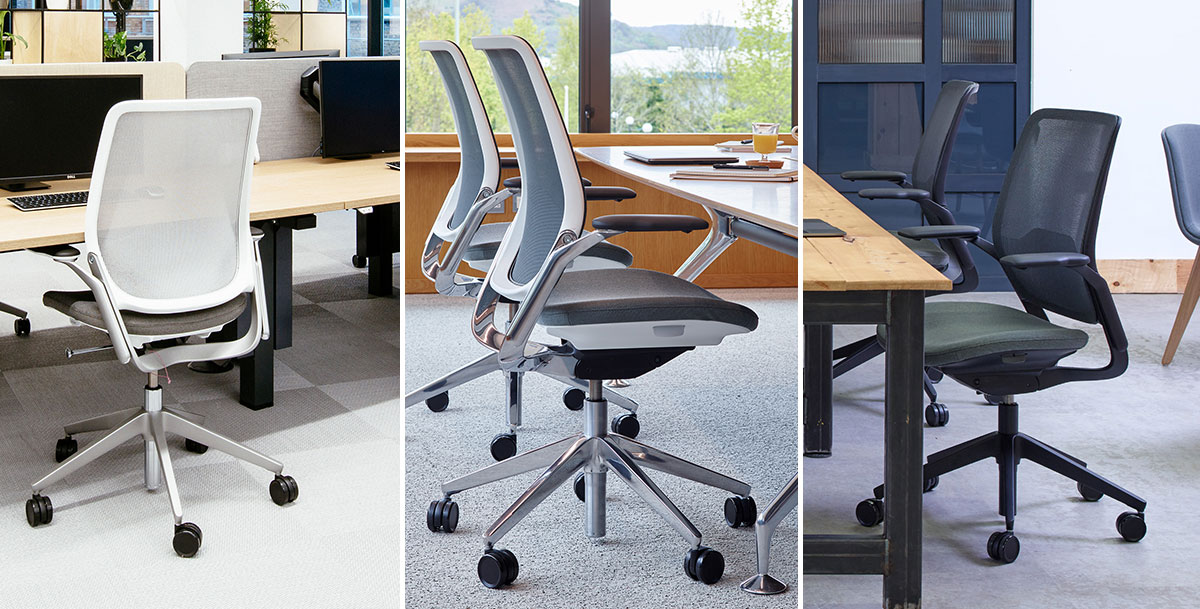
6. Recycled materials
Recycled materials are also sustainable as they don't rely on non-renewable resources. New materials require fresh raw materials to be sourced and created for the first time, rather than reusing materials that can be recycled again at the end of their lives.
Office furniture manufacturers are embracing the new design possibilities that recycled materials offer to reduce the carbon emissions associated with producing furniture items.
For example, the base and back frame of the Steelcase Think chair is made from recycled glass fiber. Steelcase's 'Ocean to Office' initiative also sees them using plastics dumped in the sea to weave new, durable and aesthetically unique materials for use in acoustic screening.
The Kirn chair by Orangebox is made from 100% recycled polymer feedstock, a durable material that produces 97% less CO2 in its processing than virgin plastics of the same type.
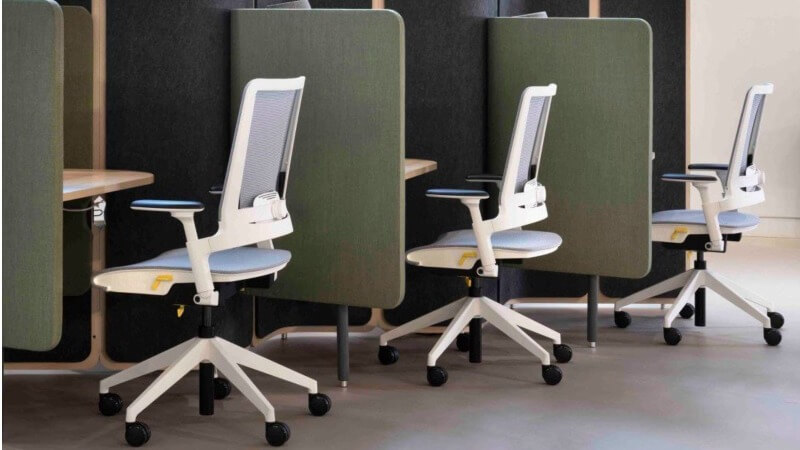
Modus furniture also use recycled materials to create sustainable products. The Richard chair is made from 100% recycled pressed PET felt shell and powder coated steel tube legs. And the Michael stool is crafted from 100% recycled cork from the waste produced when manufacturing wine corks.
.jpg?width=800&name=My%20project%20(67).jpg)
7. Bio-based plastics
Bio-based plastics are derived from renewable sources such as corn starch, sugarcane, and other plant materials, offering a more sustainable alternative to traditional petroleum-based plastics.
These eco-friendly materials are increasingly used in commercial furniture, offering similar durability and flexibility without a heavy environmental footprint. Bio-based plastics contribute to reducing carbon emissions and dependency on fossil fuels, which aligns with corporate sustainability goals.
Additionally, furniture made from these materials can improve indoor air quality by minimising the release of harmful chemicals over time, thus supporting a healthier work environment for employees.
8. Innovative materials
As manufacturers look for more sustainable ways to produce office furniture, new material alternatives are being invented all the time.
Mushroom mycelium has been hailed as a sustainable material of the future. It has several valuable properties as a manufacturing material as it can grow into almost any shape and can vary in density. It acts as an insulator for sound and heat and is even fire resistant. Some of the first furniture products launched using mycelium included stools and tables created by Ecovative and bioMASON, two companies that specialise in making sustainable alternatives for consumer goods.
Meanwhile, the world's first carbon-negative chair was made with AirCarbon™, a revolutionary thermoplastic developed by Newlight Technologies.
And more recently, Steelcase launched the new Flex Perch Stool, made from post-consumer electronics production waste - which was once impossible to recycle into like-new raw material.
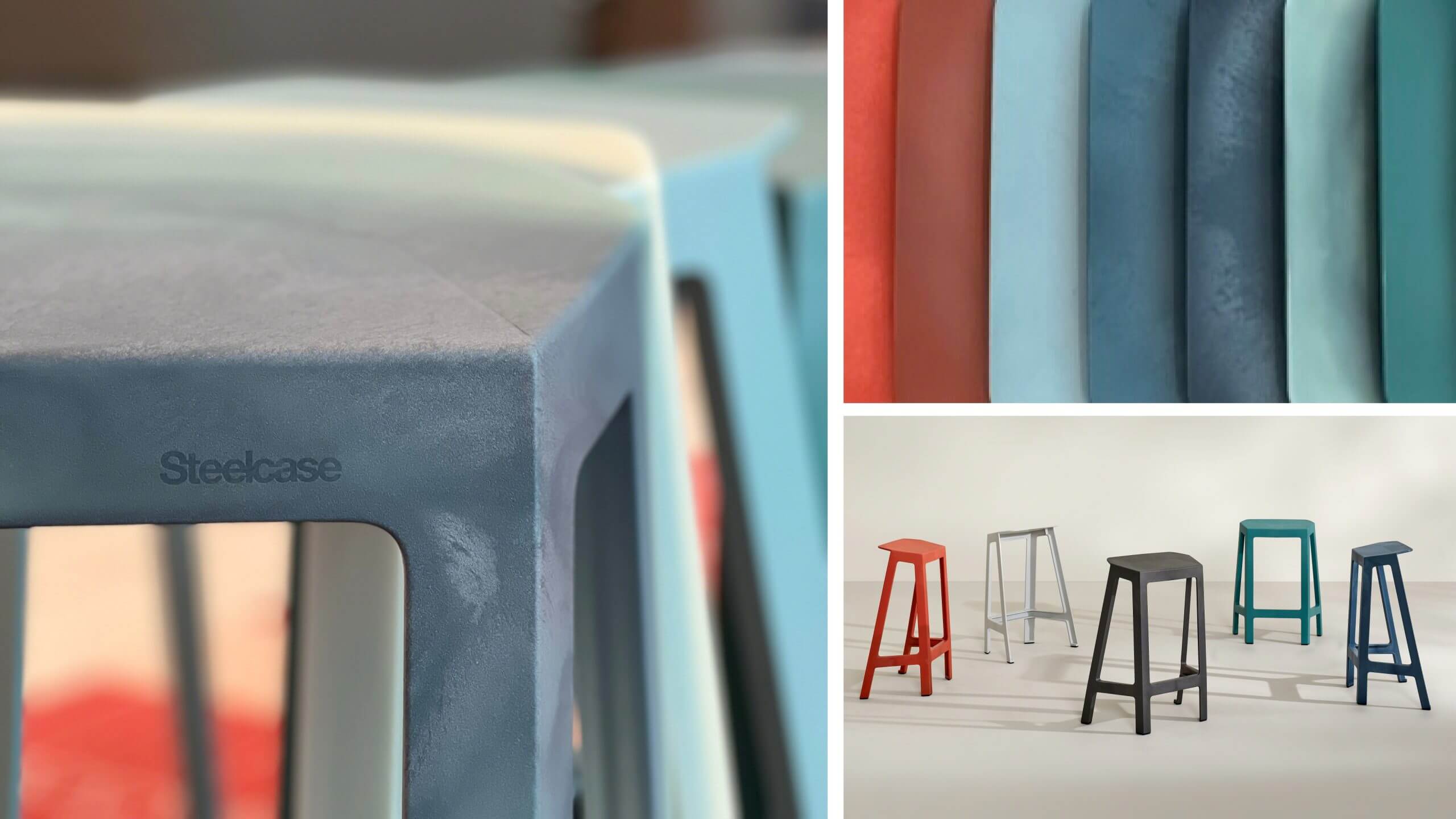
Carbon offsetting in sustainable furniture manufacturing
While furniture manufacturers are making significant strides in reducing their environmental impact by using sustainable materials, some carbon emissions remain unavoidable in the production process.
To mitigate these emissions, leading companies like Steelcase are turning to carbon offsetting as a key strategy. Carbon offsetting involves investing in sustainability projects that contribute to neutralising the carbon footprint of a product.
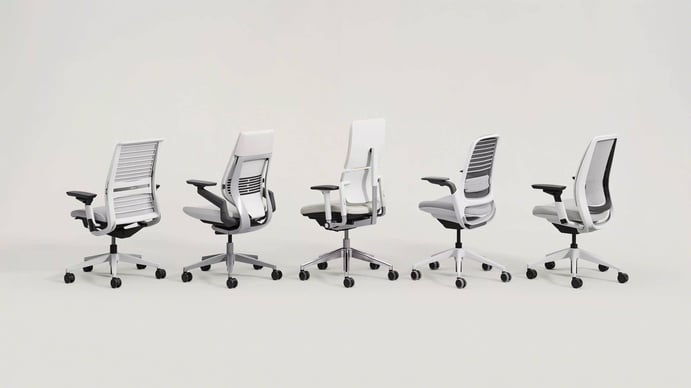
Their carbon-neutral chair range, for example, has a CarbonNeutral® product certification because the company is offsetting the footprint associated with producing products like chairs by investing in high-impact projects such as reforestation, renewable energy, and energy efficiency initiatives, ensuring that the environmental impact of their products is minimised.
Summary
The environmental impact a piece of furniture will have depends on what happens at the beginning of its life cycle during the design process. Creating sustainable office furniture all starts with first choosing sustainable materials.
Choosing products made from renewable materials like wood, bamboo and wool or sustainable metals is an excellent place to start. But recycled materials are always going to be more sustainable than fresh materials. And as manufacturers and designers continue to put sustainability at the forefront of the design process, we can expect to see more innovative sustainable materials being used in future design and more carbon-neutral products being produced.
Download our free Sustainable Office guide for more insights, or learn more about our Sustainable Office Furniture Solutions now.
Editors note: This post was originally published in 2022 and republished in 2024 for relevance and accuracy.










